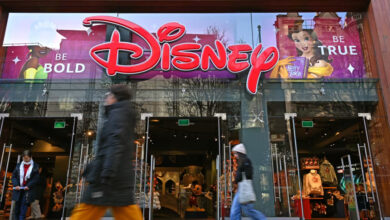
Video streaming upstarts are looking to a different model to take on industry leader Netflix: free-to-viewer services that come with ads.
While Disney, HBO, and Apple are launching competing services along the same subscription model as Netflix, others such as Tubi, Roku, Pluto and Rakuten are testing viewers tolerance for ads in video on demand services.
California-based Tubi and Japan’s Rakuten both announced plans to push into Europe this week at the MIPCOM in Cannes, France, the world’s biggest television content market.
Tubi plans to launch a Tubi Kids service next week, which will become available in Britain in 2020, and include series like “Strawberry Shortcake”, “Paddington Bear” and “The Wiggles”.
Tubi boasts that its main service in the United States with 15,000 films and television shows has a bigger library than Netflix and touts itself as a place for greater variety rather than exclusive content.
“Only about one percent of shows make people sign up for a subscription… and we are not going to launch the next ‘Game of Thrones’,” Tubi’s chief executive Farhad Massoudi told AFP.
“But we will have a library of wonderful series, films and documentaries that have won prizes at Cannes or Oscars, which you will want to watch on a Friday night,” he added.
Nevertheless Rakuten TV has announced plans to augment its film catalogue with exclusive content such as a documentary on FC Barcelona voiced by John Malkovich.
“There isn’t a strong free platform in Europe yet,” said Rakuten TV chief Jacinto Roca.
With most viewers having two or three subscription streaming services, “we consider AVOD to be a natural complement to SVOD and pay per view,” he said in reference to ad-supported and subscription video on demand services.”
The subscription video streaming market is quickly getting crowded.
Next month Disney and Apple plan to launch subscription video-on-demand services Disney+ and AppleTV+.
The British platform Britbox, which has been put together by the country’s traditional broadcasters the BBC and ITV, is expected to launch by the end of the year and WarnerMedia plans to launch its HBO Max service in the first few months of 2020.
All are major owners of content that users could be expected to pay for.
But another US giant, Viacom (Paramount, MTV, Nickelodeon), has also shown interest in the free-to-viewers model by buying Pluto TV in January for $340 million.
The service offers thematic channels with live TV shows as well as replay options, and in addition to the United States is available in Britain, Canada, Germany and Switzerland.
No ad fatigue
Across the world public and private TV chains are trying to keep viewers by offering innovative and exclusive programming.
But they still face the problem that made Netflix such a breath of fresh air for viewers: showing enough ads to turn a profit but not so many that they turn viewers off.
Ad-supported video streaming platforms will face the same problem. Those based in the US face the added challenge that Europeans are used to seeing less ads, often because of national regulations.
“To introduce Pluto TV in Europe, we reduced the number of ads,” said Olivier Jollet, the platform’s content director for Europe, during a roundtable discussion at MIPCOM.
Tubi meanwhile plans on using an ad load of only a quarter of the US cable networks as it expands, or about four to five minutes per hour.
“If you are interrupted every two minutes with a commercial break you are not going to be happy,” he said.
“We have no intention of making the entertainment experience miserable.”
Rakuten plans to have about half the ads of broadcast television.
Free video on demand services should be attractive to advertisers as there are viewers watching the ads, and Rakuten’s Roca said those who buy time on traditional televisions are in fact showing interest as such services allow better targeting of audiences and possibilities to innovate.
Social networks haven’t been idle in this space.
Facebook’s Watch platform announced this week partnerships with food and travel programming network Tastemade and French channel M6.
The world’s biggest advertising-supported streaming site is Google’s YouTube, which has been operating since 2005, although it has focused on shorter-length videos.
While most content owners have been vigilant against their programmes appearing on YouTube, some are now embracing it. Lagardere Studios in France has placed episodes from two popular series it owns on the site.




